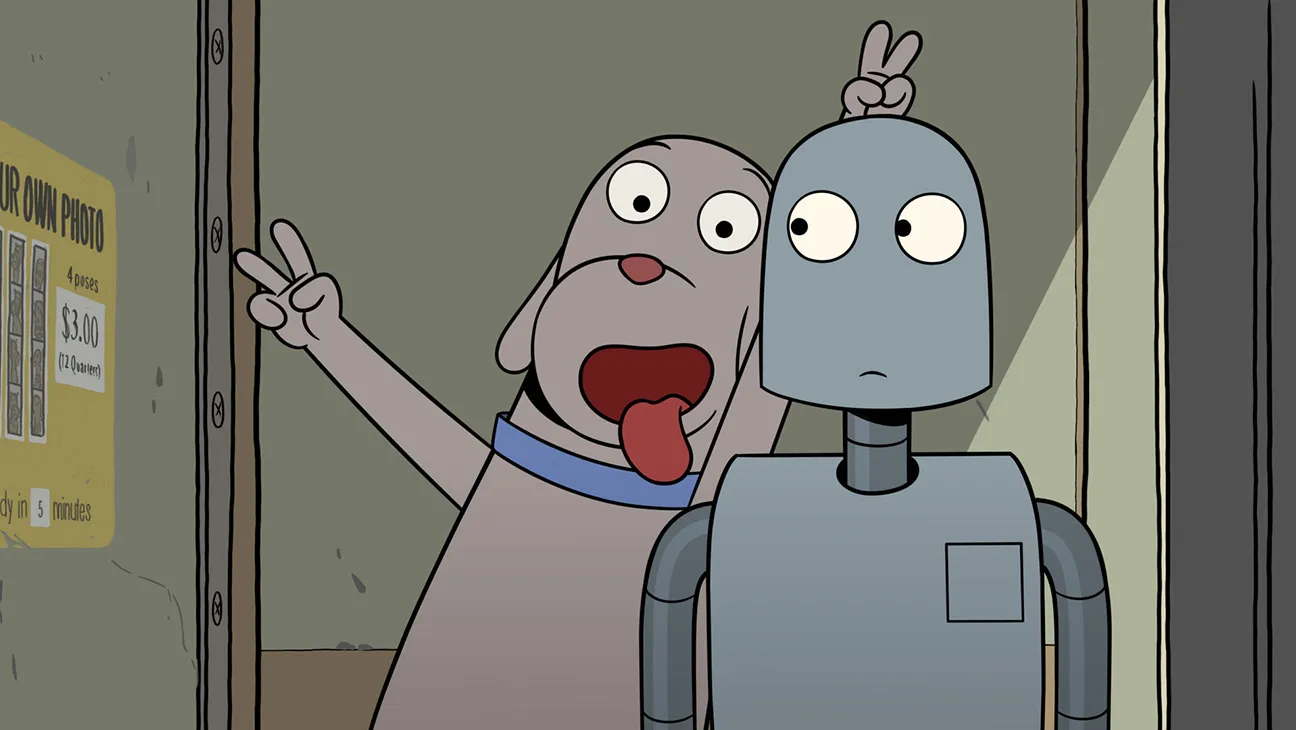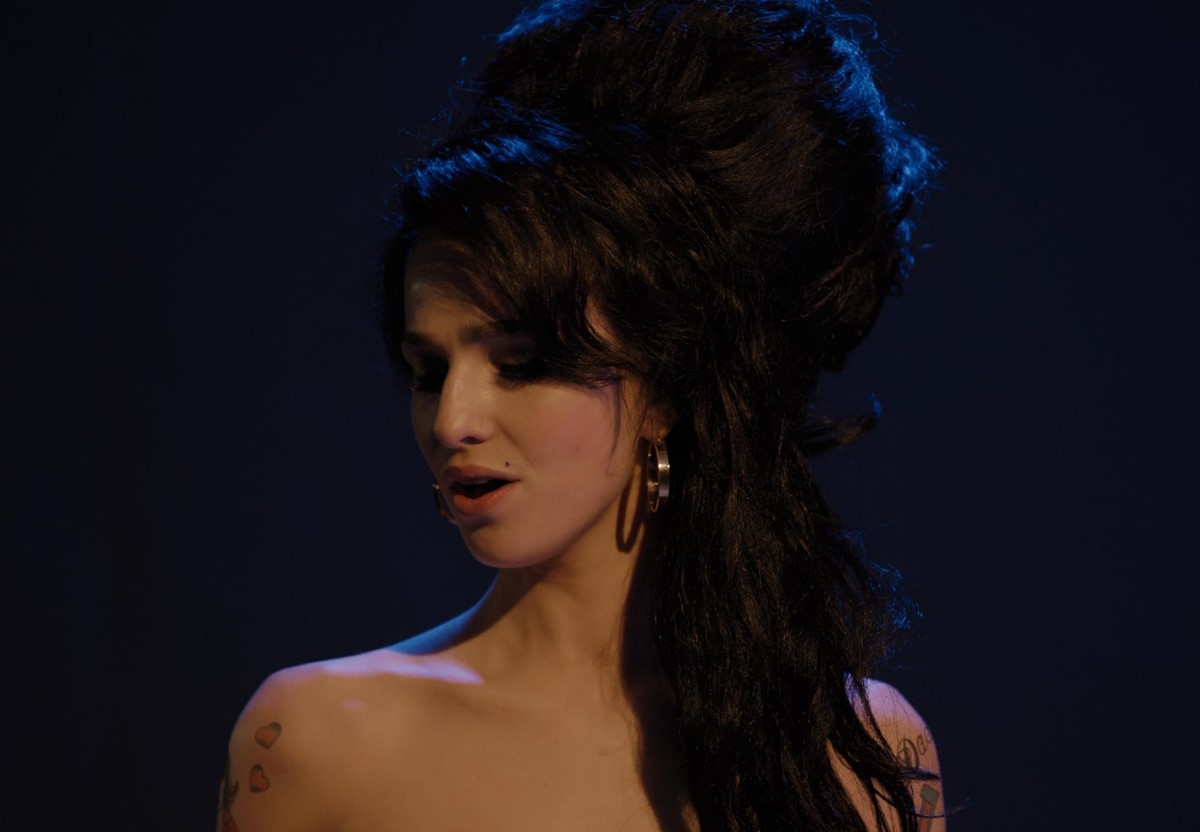by Pauline Kael
As an artist in Martin Scorsese’s Life Lessons, the first part of the anthology film New York Stories, Nick Nolte is more bricklayer than aesthete, and that’s what’s great about him. After the artist’s girl tells him she’s leaving him, he gets into a rhythm as he spreads bright colors on a huge horizontal canvas, and you can see that he has the energy to breathe life into it. This isn’t a matter of physical size; it’s his conviction, his sureness. Scorsese is a skinny little guy, but he’s got this energy, too. And he uses Nolte’s Lionel Dobie for good-humored self-satire. Still, Nolte’s towering stockiness does help: he’s a wonderful sculptural object—a loping, gray-bearded beast spattered with paint. He pads up and down in front of the canvas moving his brushstrokes to rock and roll, played loud enough to drown out distractions. Dobie works fast. Smiling, he’s dancing with his brushes, painting to the music. Scorsese knows that painting to rock is a cliche, but he also knows that it’s a good way for an Action painter to work. The music turned up high like that unifies Dobie’s impulses. His sensuality is all working together, exciting him, keeping him going.
That sensuality is also the story’s comic spirit; Scorsese is laughing at Dobie while identifying with him. That’s wrhat makes the little, forty-five-minute film so intensely enjoyable. Even Dobie’s possessive love for Paulette (Rosanna Arquette), his assistant, who lives and works in an enclosure in the loft, is comic. She’s just a slip of a girl. Roughly fifty, he’s almost two and a half times her age; he’s at least twice her size. And, though her eyes still shine when she watches him paint, she’s fed up with him—with his slack belly, his slyness, his genius. She’s ready to move on. (It’s too bad that her work doesn’t suggest his influence; if she painted wan imitation Dobies, her plight would have a bit more pungency.) Dobie is lucky: he’s drawn to girls he can impress—he’s drawn to groupies. And he’s famous enough to attract an endless supply of them. But he can’t let go. He’s so sneakily determined to hang on to Paulette that, like Dostoyevski, whose life is the source of the screenplay that Scorsese sketched for the writer, Richard Price, Dobie solemnly pledges that if his protegee will go on living with him he won’t touch her.
Dobie torments himself; he torments her. To some extent, he knows what he’s doing: he needs to keep his turbulence up. He fetishizes every part of her, and especially her leg, with its fine gold-chain anklet, indolently extended on her bed. It’s a perfect piece of erotic calendar art; he yearns to kiss that foot. He thinks that it’s all he can think about; we laugh at his roiling frustration, because he somehow pours it into his work. He’s a laboratory: he manufactures the tumult he needs for his painting. Appraising a possible replacement for Paulette, he tries to gauge whether he can fetishize this girl, too. She doesn’t matter to him any more than Paulette does. We enjoy watching this ego furnace of his. (Staring at Paulette’s foot, he remarks, “Nothing personal.’’) The girls aren’t hurt by his manipulations: they’re getting what they want—they’re getting entree into the big-time art world. And we enjoy the rich downtown impasto: the not- surprised-by-anything dealer (suave and grouchy Patrick O’Neal, with his parched voice), the performance artist (Steve Buscemi), the young painter (Jesse Borrego), the cops, the celebrities, the celebrity hounds. It isn’t just Dobie’s colors that are squeezed out straight from the tube (they land on his matted hair, his glasses, his Cartier watch, his belly); Nestor Almendros lights the crowds and parties so they have this same thick brilliance. No doubt Scorsese feels an affinity with the Abstract Expressionist idea that the canvas should be exciting all over; there’s a visual buzz going on throughout the movie. This is the SoHo carnival as Scorsese sees it, zeroing in on objects the way the painter does. He keeps it all swarming to the (often parodying) music.
I was caught up in the passionate thrashing around that Scorsese did in The Last Temptation of Christ. His ambivalences and confusions became visible; they were right there on the screen. And he seemed to have gone straight through to the sources of his love of moviemaking. He told stories about a man (he looked like a Flemish Christ) who was perhaps a bit of a fool, and maybe a charlatan, and yet performed miracles, and such is the nature of movie-watching that (even if you’re not a Christian) you wanted more and more miracles. You wanted him to show those doubters. Now it’s as if Scorsese, having put his fanatic adolescent perplexities on the screen, had cleared his head. Maybe his films will no longer have to swing between passivity and violence.
Life Lessons is his most genial work: if jealousy and rejection fuel Dobie’s art, happiness fuels it, too. Everything that keeps him jumping goes into it. The fun of the movie is in its not taking Dobie or his art too seriously. He’s not a man of much depth, but the picture doesn’t wring its hands about that. Scorsese has lightened up, and in a satisfying way. He’s developed a sense of horseplay. We don’t feel he’s scoring off Dobie, because he’s scoring off himself. He sees the comedy of his own compulsiveness in love and art, and he’s able to sustain this vision.
Price’s script is rather broad, but, given a halfway-good role, Nolte takes it all the way. He’s a master of the inchoate, the deeply mixed up. He’s like the man with a hoe: you can read his muscles. And he gives this little picture scale and heft. Dobie, preparing for a new show, stays up all night painting, aware that Paulette is entertaining a young lover in her partitioned mini-loft inside the huge loft. He lets up on the blaring rock and listens to Mario Del Monaco singing “Nessun dorma,” from Puccini’s Turandot. For a minute, his energy flags, and he sits bare-chested, spent—trying to come to terms with both his fatigue and the pulsating sensations that drive him on. The tenor lifts up his voice in the sweet anguish of “Nessun dorma’’—no sleep, no sleep until he has possessed the woman who eludes him. And, with Nolte sitting there listening, you don’t have to know what the words mean to roar with laughter.
The middle story, the thirty-four-minute Life Without Zoe, directed by Francis Coppola, from a script he wrote with his seventeen-year-old daughter, Sofia, attempts to use New York as a city out of the Arabian Nights. The conceit never takes hold; Vittorio Storaro’s fabled golden light comes across as an aberration; Coppola’s head doesn’t seem to be in his moviemaking. Let’s not linger over it—just note that Don Novello brings a little snap to the role of Hector (the butler who tends to the twelve-year-old heroine, in her apartment at the Sherry Netherland), and that Carmine Coppola plays a street musician (a flutist) with a tawdry vigor that actually says something about the city. What about the plot? Well, it’s like those long, boring anecdotes that used to end with “Isn’t it amazing what the mind of man can conceive!’’
There are some genuine laughs in Woody Allen’s thirty- nine-minute Oedipus Wrecks. He stars in it as Sheldon Mills, a quiet, dignified lawyer, who, distraught, says to his analyst, “I’m fifty years old . . . and I still haven’t resolved my relationship with my mother.” When his mother, Mrs. Mill- stein (Mae Questel), appears, it’s clear that nobody could resolve a relationship with this demon. A tiny woman, she seems harmless until you hear her voice: it drills into your skull and sucks out your brains. There is no answer to anything she says. Poor Sheldon, who has tried to escape the hideously familiar sound by de-Jewishing his name and becoming engaged to a Gentile (Mia Farrow), doesn’t stand a chance.
His deepest wish is fulfilled: his mother disappears—but only to return in punishing nightmare form, discussing his engagement with crowds of people. Clearly, she understands—as we do—that he’d be afraid of dating a Jewish woman, afraid that she’d turn into his mother. He feels that if he marries his shiksa he’ll escape his mother; he’ll grow up—he’ll gain his dignity.
This is Woody Allen’s kind of comedy—the situation harks back to his earlier, funnier films, and the audience is grateful. But what was once peppy and slobby-spirited has become almost oppressively schematic. This film (with cinematography by Sven Nykvist) is too cleanly made for what it’s about. It just doesn’t have the organic untidiness that was part of Woody Allen’s humor. Even his jokes are clean now, and his malice has been airbrushed out. He can’t really revive the kind of comedy he used to do. For one thing, when a man in his thirties is befuddled it can be charming—you figure he’ll work it out. But when he’s in his fifties even his befuddlement has a weight. The little film itself is too deliberate. It has been a while since Allen directed out-and-out comedy, and here and there his timing is off. (When the magician is onstage putting swords through the Great Chinese Box that Mother is in, the scene is flabby right up until the cut to Sheldon, in the audience, smiling.) If Allen’s pacing were speedier and more casual and erratic, maybe we wouldn’t get the occasional feeling that we’re watching waxworks—that he has already done too much of this. (We especially don’t need his sortie into the Chaplinesque; he reaches for high emotion with something so derivative it cancels itself out.)
But even with the wax, the fumbles, and the absence of the kind of moviemaking excitement that Scorsese charges us up with, this short-story comedy is very appealing. (It might be more appealing, and it would definitely be messier, if the mother wasn’t simply a demon—if maybe she was a likable force of nature, with wit and gusto, but still made Sheldon feel ashamed of being her son.) The movie does take a surprisingly amiable—if somewhat ambiguous—turn. From what we see, Sheldon’s relationship with his fiancee is polite and bland; it has no color or warmth—it has no silliness. And he gives no sign that he knows he’s missing out on anything. But when, at his therapist’s suggestion, he consults a clairvoyant, Treva (Julie Kavner), he finds himself responding to qualities that mark her as the opposite of his fiancee. Treva is like a high priestess of slobbiness. Devoted, caring, anxious, solicitous—and, above all, weepy—she’s everything he has been fighting off.
Woody Allen has written the role that Julie Kavner deserves: she’s the cartoon Jewish woman redeemed, and she plays it superbly—she’s a Yiddishe Olive Oyl, a hopeless involuntary comic. And, even in the guise of Sheldon the lawyer in tweeds, Woody Allen recognizes her as his soul mate. The movie is a Freudian vaudeville, worked out with details such as Sheldon’s loose, improved sex life during the period of his mother’s disappearance. It’s just after he acknowledges to his analyst that he’s happy without her that everything clamps down on him. Freud was a Jewish comic, too (and his jokes also went on too long).
The New Yorker, March 20, 1989




